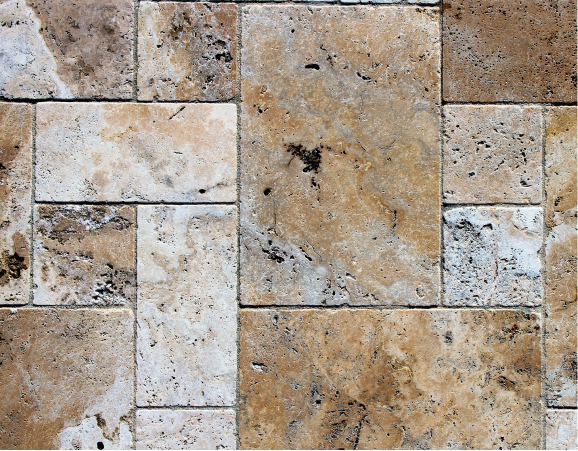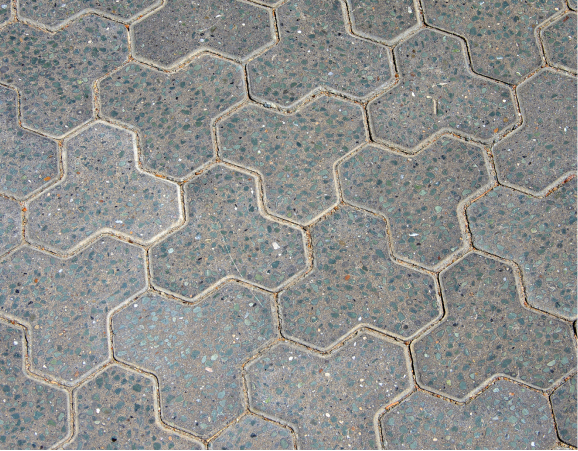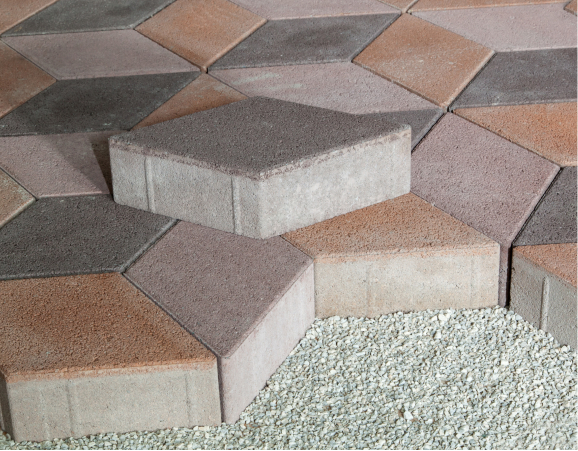Vision Board
Bring your vision for your outdoor living space to life – beautifully. Use this information from Faber Hardscapes as a resource and inspiration for your hardscaping project.
Hardscaping materials

The right hardscaping material for your project should add balance and focus to your outdoor space. We’ll provide options in brick, tile, stone, wood, and faux wood and guidance in choosing the look that works for your property.
Paver shapes & patterns

Pattern and design in hardscaping ensures a unique look to your project. When using pavers, you have a variety of patterns to choose from. We’ll help you find the pattern that elevates your project from functional to sophisticated.
paver types & materials

From material type (like brick, concrete, flagstone, cobblestone, and more) to color and texture, choosing the paver type for your project is a matter of both function and beauty. We’ll work with you to get the perfect match or beautiful blend to highlight your property.

Hardscaping Design
Faber hardscapes’ installation process
Trust your hardscaping project to Faber Hardscapes for professional quality results. We adhere to manufacturer-recommended installation processes every step of the way. Here’s what you can expect:
- Excavation
We ensure all underground lines are identified prior to excavation. During excavation, we carefully dig with special attention to proper slope and grade. - Base Preparation
Professional base preparation is key to a beautiful and lasting hardscape. We compact the excavated base and install separation fabric when recommended by the manufacturer. The stone aggregate base is added and evened out. Each layer is compacted in overlapping passes. After the final base layer is compacted, the area is measured for levelness and adjusted accordingly. - Sand Setting
Screed guides are laid on the compacted base material and dry sand is distributed and compacted. Voids are filled and troweled smooth and the surface is leveled. - Laying Pavers
Pavers are laid lightly onto the sand and string is run to maintain straight lines. - Seating Pavers
Specialty fabric is laid between the pavers and the tamper. At least two overlapping passes are made with the tamper to level the pavers and compact them into the bedding sand. - Applying Joint Sand
Joint sand is spread over the pavers and swept in to fill all joints. Excess sand is swept away. Specialty fabric is laid between the pavers and the tamper. At least two overlapping passes are made with the tamper to force the sand into all joints and interlock the pavers. - Installing Finish Stone
Stone capping, coping, or treads are installed with mortar or flexible concrete adhesive, and joints are filled. - Applying Sealant
If the paving product manufacturer recommends applying sealant, it is applied at this step.
Suppliers we prefer
- Belgard®
Belgard offers an array of outstanding hardscape pavers and specialty products to bring your outdoor vision to life. - Cambridge Pavingstones®
Cambridge Pavingstones with ArmorTec®, wallstone systems, natural stone, and finishing touches offer quality and value for a perfect hardscaping project. - EP Henry®
EP Henry offers a broad assortment of distinctive pavers and slabs that set the standard for beauty, quality, and durability.

Friendly Tips From Faber Hardscapes
Helpful design tips
Before you decide on a design for your outdoor living space, it’s important to consider these five features of hardscape design:
- Function
Think about what you want your outdoor living space to do for you. Do you want to cook and serve meals there? Entertain? Relax? Escape? Understanding the purpose of your space will guide all the other decisions for your project. - Style
Define your home’s style and color palette. Your outdoor room should coordinate with the interior and exterior of your home. Defining the style will make your new outdoor space a seamless extension of your indoor space. - Maintenance
There will be maintenance involved in keeping your new outdoor space beautiful, no matter what material you choose for your hardscaping project. Think about how much maintenance you want to undertake or contract for before choosing hardscaping materials. - Drainage
Your new outdoor living space will extend your home’s area. As such, it will also affect drainage on your property. Your hardscaping contractor will help you consider how rain runs off your space, where it should drain, and how drainage can affect your environment.
Helpful terms
Use our list of helpful terms to better understand more about hardscaping materials and the design process.
- Arbor
A small freestanding structure of wood or other material that serves as an entrance to a garden or yard, often also used as a support for vines or climbing plants. - Base
The area beneath hardscaping projects, which can be made of concrete or gravel depending on the application. Correct base preparation is important in the success of a hardscaping project. - Bluestone
A natural sandstone material used in patio or wall construction. - Boulders
Round natural stone that adds aesthetic beauty to landscaped areas. - Clay Brick
Natural brick that is fired in a kiln. - Cut Drywall
Natural stone that has been cut and shaped for use in garden, retaining, and seat walls. - Fire Pit
A low structure or portable component in the outdoor living space that can burn wood, gas, or propane. - Flagstone
Natural stone cut into thin flat sheets and used for patio surfaces and walkways. - Footing
A poured concrete foundation for columns, posts, fireplaces, and other structures. - Hardscape
Any landscape feature or component that is not a plant. - Inlay
Designs made from pavers or other material that are laid inside the main field of pavers for a decorative effect. - Modular Paver
Brick cast from concrete. - Outcropping
Rugged pieces of natural stone used in walls and steps or as accents in the landscape. - Outdoor Room
Any outside space or patio area that is used for dining or other social activity. - Pergola
Larger than an arbor, a pergola serves as a shaded area for a walkway or sitting area. - Permeable Paver vs. Standard Paver
Permeable pavers are installed to allow water to go through the surface of the paver joints. Standard pavers are installed so that water runs off the surface of the paver. - Pillars
Columns of stone or brick used as garden accents. - Retaining Walls
A wall that holds or retains soil behind it. Retaining walls up to 3 feet in height are usually considered gravity retaining walls – they rely on their own weight and design to remain upright. For taller walls, or those that are not supported by gravity alone, the retaining wall is reinforced. The reinforcement method depends upon the wall type, height, design, friction, angle, soil material, and more. The soil behind the wall will require stabilization with some means of artificial reinforcement such as steel or geosynthetic geogrids. - Sandstone
A natural material for walls or walkways. - Seat Wall
A wall that offers additional seating on a patio or in an outdoor room.
Helpful paver maintenance tips
Pavers can be a beautiful solution for walkways, patios, and more. Keep them in great condition by following these simple DIY tips:
- Sweep
Keep your pavers looking their best with regular sweeping (by broom or leaf blower). It is especially important to remove any leaf debris before a rain, as leaves can often stain light colored pavers. - Rinse
Rinse dirt and grime from pavers with a hose. Remove any moss with a pressure washer, but be careful the pressure does not damage the stone. - Clean
Remove stubborn stains from pavers by using dish soap and water applied to a scrub brush or sponge. - Seal
Follow your installer’s recommendations about how often to apply a sealer to your pavers. Always apply sealer to clean, dry pavers. - Weed
Remove any weeds that may grow between paver joints to prevent pavers from shifting.
Make Your Hardscaping Project Easier Than You Ever Thought Possible
Trust Faber Hardscapes to pave the way to a beautiful new or renovated outdoor living space. Contact us now to get started.
